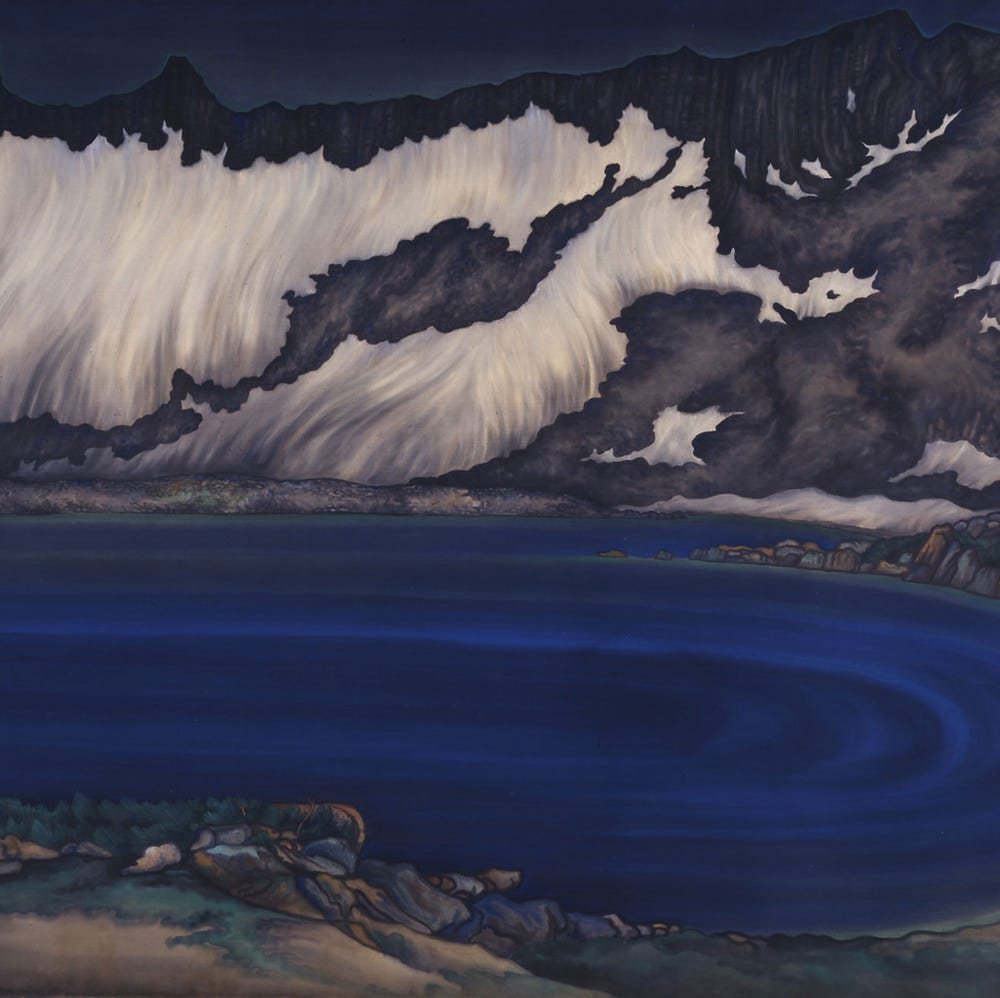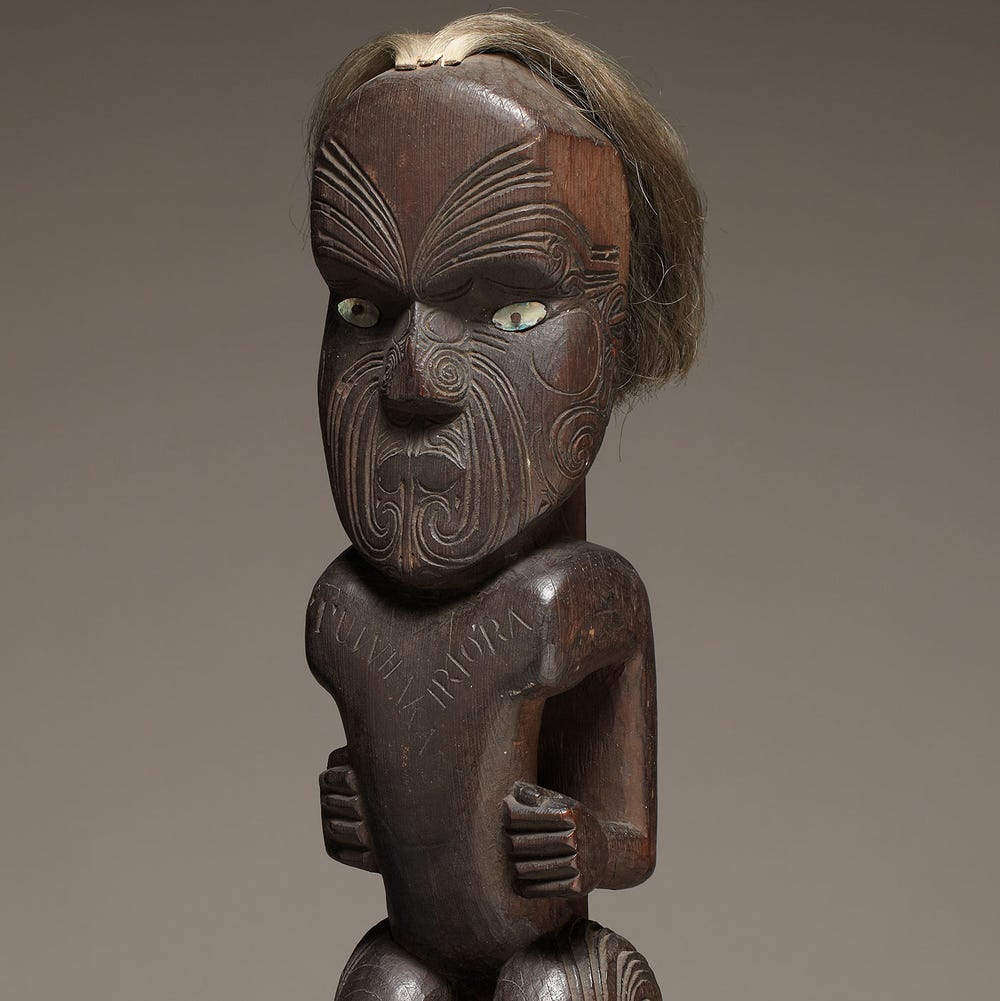Curator Crossover: So a Scientist Walks into an Art Museum . . .
By Jack Dumbacher, curator of birds and mammals, California Academy of Sciences
June 27, 2024
Jack Dumbacher bonding with Penguins (1917) by Albert Laessle. Photograph by Nicole Ravicchio © 2024 California Academy of Sciences
As a Cal Academy curator who studies birds and mammals, I spend a lot of time in far-flung locations throughout the world. This expedition was different: Instead of a remote field station, I ventured into the wilds of the art world at the de Young museum, only a few hundred yards across the park. I enjoyed exploring the science behind a variety of artworks on view — and I didn’t even need to bring my binoculars.
1. Penguins by Albert Laessle (1917)
Albert Laessle, Penguins, 1917. Bronze sculpture, 36 x 28 x 20 1/2 in. (91.44 x 71.12 cm). Fine Arts Museums of San Francisco, Museum purchase, The California Palace of the Legion of Honor, 1930.4. Photograph by Nicole Ravicchio © 2024 California Academy of Sciences
This playful pair of penguins can be found along a path just northeast of the museum. While definitively identifying the species is tricky, the stout bill and body shape suggest the genus Spheniscus, which includes the endangered African penguin (Spheniscus demersus), commonly exhibited by zoos. (You can view a colony of real, live penguins across the concourse at the Cal Academy.) Apparently, Laessle had a studio not far from the Philadelphia Zoo, where he could have easily seen and studied the penguins — perhaps those Philly penguins inspired this sculpture.
2. A Ranch on the Plain by Peter Hurd (ca. 1954)
Peter Hurd, A Ranch on the Plain, ca. 1954. Tempera on hardboard, 29 3/4 x 47 1/8 in. (75.6 x 119.7 cm) sight. Fine Arts Museums of San Francisco, Gift of the California Brewing Company, 54.37
This painting shows an aerial view of a ranch bathed in evening light. Surveying the scene is a golden eagle (Aquila chrysaetos), the largest eagle in North America, known for hunting in open areas like the one depicted. Something struck me as odd about the painting: Normally, the tail of a golden eagle in flight wouldn’t be fanned so widely, and its wing and tail feathers would be lifted instead of dropped — it was almost as if the feathers were pinned to a board. Turns out, they were. Peter Hurd painted the bird from a pinned model. This was common practice at the time, when artists had fewer reference photos and often painted birds in strange positions that were far from lifelike.
3. Pig, Massim artist (19th century)
Massim artist, Pig, 19th century. Wood, encrustations, 8 x 16 x 5 in. (20.3 x 40.6 x 12.7 cm). Fine Arts Museums of San Francisco, Gift of Marcia and John Friede (purchased in part with funds from the Evelyn A.J. Hall Charitable Trust), 2010.77.155. Photograph by Nicole Ravicchio © 2024 California Academy of Sciences
Having worked in Papua New Guinea, I often saw carved pigs in tourist markets and souvenir shops. But being in the presence of this carved pig from Papua New Guinea (crafted more than 200 years ago) was awe-inspiring. I was mesmerized by its darkened patina (from being handled and stored in smoky houses) and its unusually large size. Pigs are not native to New Guinea. They were likely brought there by early human travelers and settlers, perhaps as long as 50,000–60,000 years ago. Considered good luck charms, symbols of fertility, and signs of wealth, pigs in Papua New Guinea are cared for like pets or family members.
4. One-legged woman & her piglet by Elizabeth Kauage (2008)
Elizabeth (Elisabet) Kauage (Miugu Village, Kerowagi District, Chimbu [Simbu] Province, now in the independent country of Papua New Guinea, ca. 1945). One-legged woman & her piglet., 2008. Acrylic on canvas. Fine Arts Museums of San Francisco, Gift of Richard Hogg, 2011.50.4. Photograph by Jorge Bachmann
I’m an ornithologist, so naturally I was drawn to this feather-centric painting. In it, a woman is dressed to the hilt in a feather headdress and shell necklace. Traditional Papua New Guinean bilas, or body decorations, are made up of lots of elements from wildlife, especially the colorful feathers of parrots and birds of paradise. Coveted status symbols, feathers were a sign of wealth and standing, and were passed down from generation to generation. For me, this piece tells a complex story about Papua New Guinean women’s resilience and ingenuity in the face of adversity.
5. Orchid and Hummingbird by Martin Johnson Heade (ca. 1885)
Martin Johnson Heade, Orchid and Hummingbird, ca. 1885. Oil on canvas, 15 1/8 x 20 1/4 in. (38.4 x 51.4 cm). Fine Arts Museums of San Francisco, Gift of Mr. and Mrs. John D. Rockefeller 3rd, 1979.7.49
I saved my favorite for last. This work merges elements of two popular painting genres of the era — landscapes and bird portraits — and the result is spectacular. Hummingbirds are only found in the Americas, and their tiny size and insect-like flight are unique among birds. Paintings like these were meant to bring these special birds, and the feeling of being in a rainforest, to people all over the world. Orchid and Hummingbird is an exquisite example of how 2D artworks can be as immersive and transporting as the Academy’s 3D dioramas.
Thanks for joining me on my artistic expedition. But it’s not over yet. Check out de Young curator Emma Acker’s scientific adventure at the Cal Academy!















